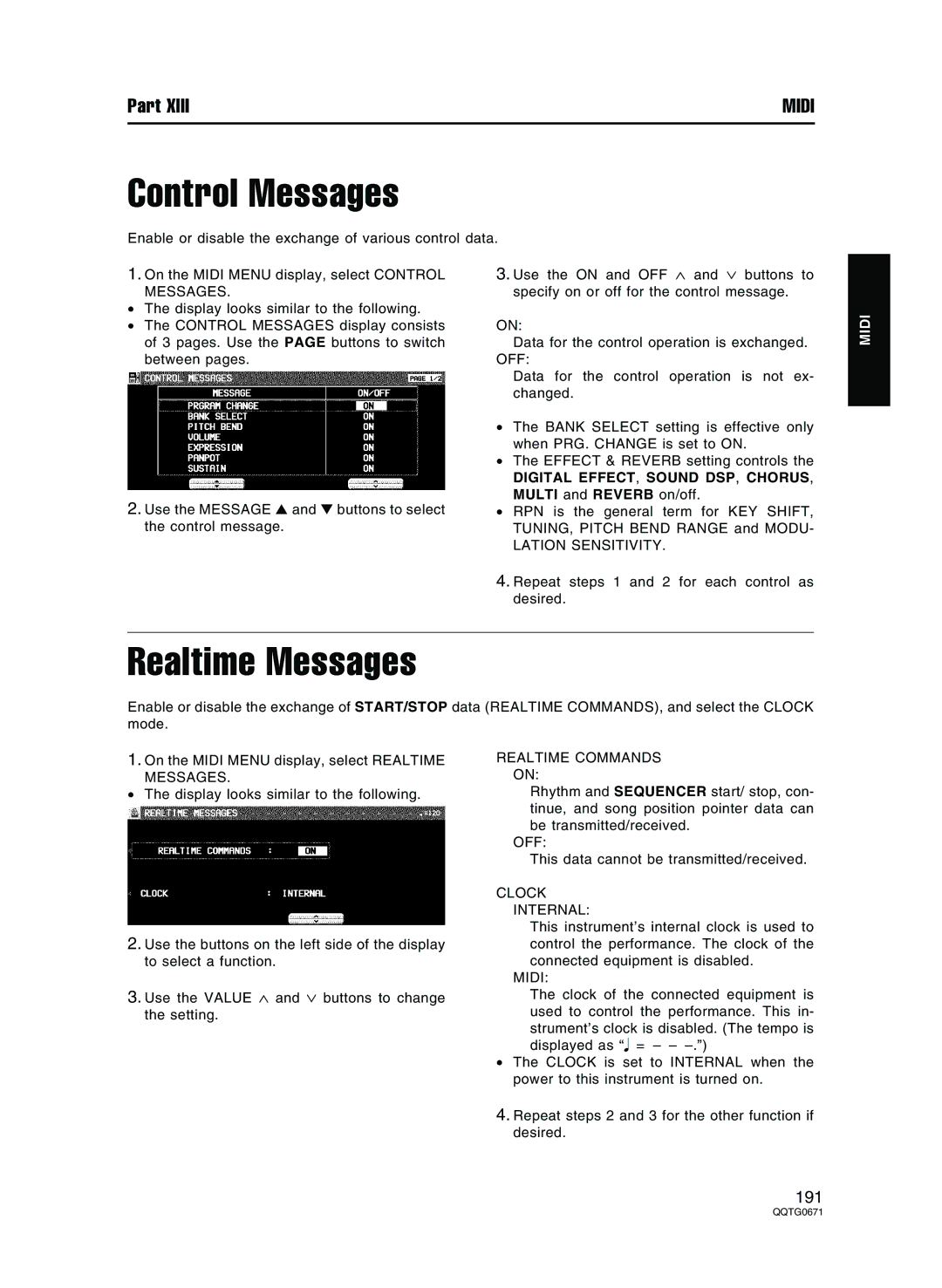
Part XIII | MIDI |
Control Messages
Enable or disable the exchange of various control data.
1.On the MIDI MENU display, select CONTROL MESSAGES.
•The display looks similar to the following.
•The CONTROL MESSAGES display consists of 3 pages. Use the PAGE buttons to switch between pages.
2.Use the MESSAGE ▲ and ▼ buttons to select the control message.
3.Use the ON and OFF ∧ and ∨ buttons to specify on or off for the control message.
ON:
Data for the control operation is exchanged. OFF:
Data for the control operation is not ex- changed.
•The BANK SELECT setting is effective only when PRG. CHANGE is set to ON.
•The EFFECT & REVERB setting controls the
DIGITAL EFFECT, SOUND DSP, CHORUS, MULTI and REVERB on/off.
•RPN is the general term for KEY SHIFT, TUNING, PITCH BEND RANGE and MODU-
LATION SENSITIVITY.
4.Repeat steps 1 and 2 for each control as desired.
MIDI
Realtime Messages
Enable or disable the exchange of START/STOP data (REALTIME COMMANDS), and select the CLOCK mode.
1.On the MIDI MENU display, select REALTIME MESSAGES.
•The display looks similar to the following.
2.Use the buttons on the left side of the display to select a function.
3.Use the VALUE ∧ and ∨ buttons to change the setting.
REALTIME COMMANDS ON:
Rhythm and SEQUENCER start/ stop, con- tinue, and song position pointer data can be transmitted/received.
OFF:
This data cannot be transmitted/received.
CLOCK INTERNAL:
This instrument’s internal clock is used to control the performance. The clock of the connected equipment is disabled.
MIDI:
The clock of the connected equipment is used to control the performance. This in- strument’s clock is disabled. (The tempo is displayed as “ = – –
•The CLOCK is set to INTERNAL when the power to this instrument is turned on.
4.Repeat steps 2 and 3 for the other function if desired.
191
